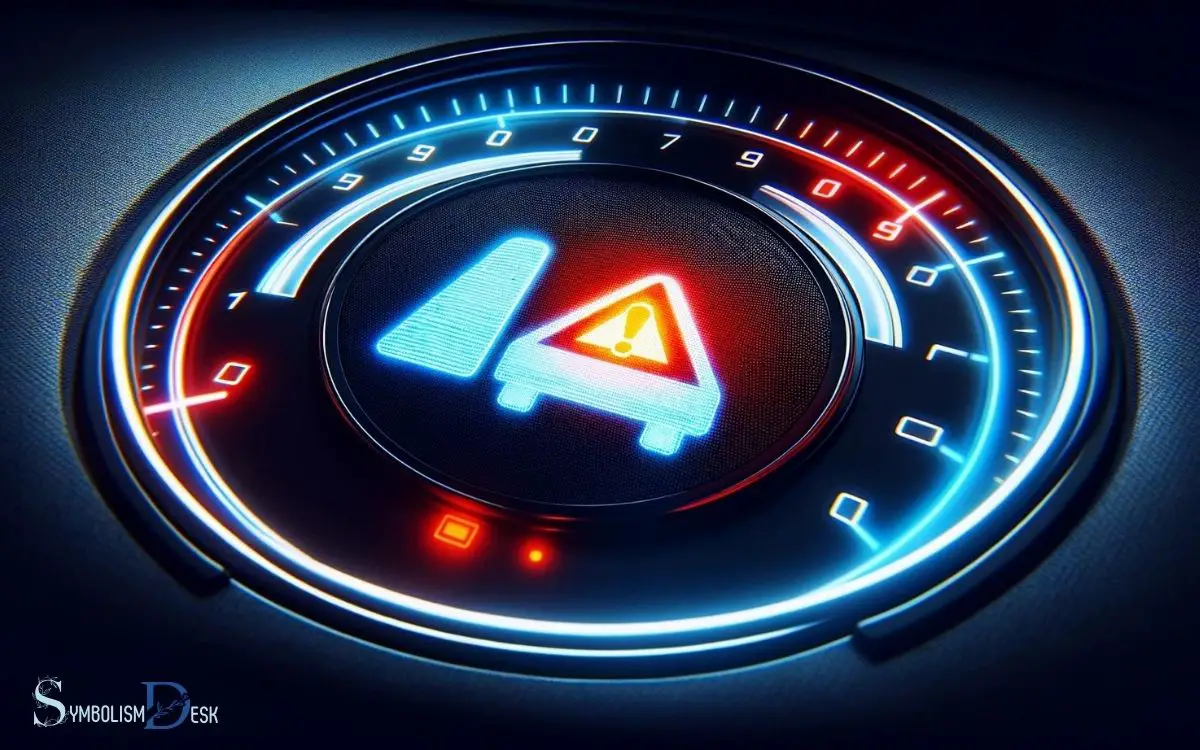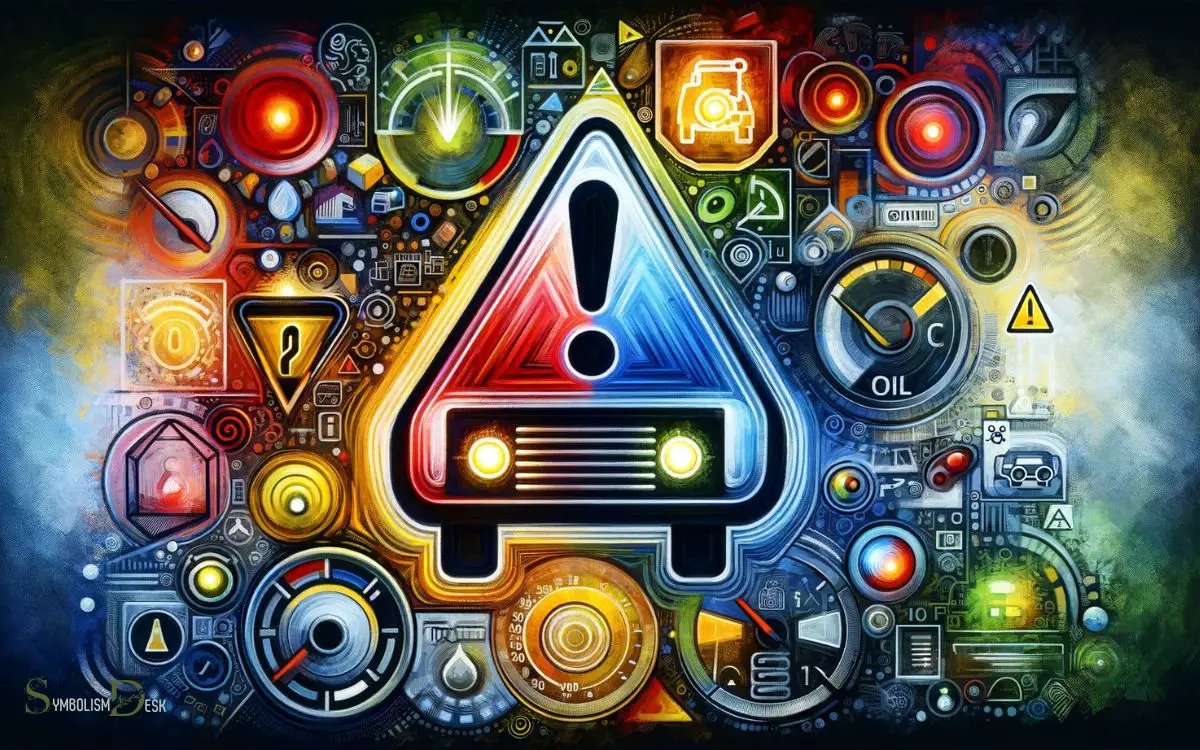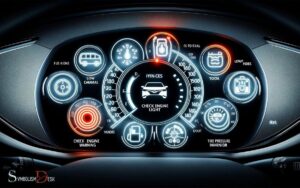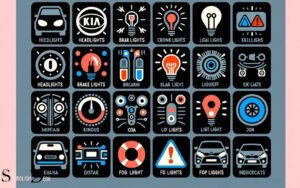Car Symbol Flashing on Dash: Immediate Attention!
If a car symbol is flashing on your dashboard, it indicates that your vehicle’s onboard systems have detected an issue that requires immediate attention.
The specific symbol represents a particular system or problem, such as engine trouble, low oil pressure, or a malfunctioning charging system.
You should refer to the vehicle’s owner’s manual or seek professional assistance to diagnose and address the problem.
Dashboard warning lights come in various symbols and colors, typically red, amber, green, or blue, each signifying the urgency of the issue.
For example:
- Red: indicates a serious issue or safety concern
- Amber/Yellow: suggests something needs to be serviced or repaired soon
- Green/Blue: often signifies that a system is on or operating normally
Some common car symbols that may flash on the dash include:
- Engine warning light: may indicate a range of issues from a loose gas cap to a serious engine malfunction.
- Battery/charging alert: suggests a problem with the vehicle’s charging system.
- Oil pressure warning: indicates low oil pressure, which can lead to engine damage if not addressed.
- Brake system alert: could mean there’s an issue with the braking system or that the brake fluid is low.
- Coolant temperature warning: indicates that the engine is overheating.
When a symbol flashes, it often conveys an emergent issue, thereby necessitating immediate action to prevent potential safety hazards or costly repairs.
A flashing car symbol on the dash is a call to action to prevent possible damage or ensure your safety while driving; always consult your vehicle’s manual or a professional for guidance.

Key Takeaway
Common Causes of Flashing Car Symbols

The flashing car symbol on the dash may indicate various issues, including a malfunctioning engine or a problem with the vehicle’s electrical system.
When the engine malfunctions, it could be due to a range of issues such as a misfiring engine, a faulty oxygen sensor, or a loose gas cap. Additionally, problems with the electrical system, such as issues with the alternator, can trigger the flashing car symbol.
Another common cause is a failing catalytic converter, which can lead to increased emissions and trigger the warning light.
Furthermore, low levels of essential fluids like oil or coolant can also prompt the indicator to flash. It’s important to address these issues promptly to prevent further damage to the vehicle.
Understanding Dashboard Warning Lights

Flashing car symbols on the dashboard serve as crucial indicators of potential vehicle issues, providing drivers with essential warnings about various malfunctions and system failures.
Amidst these warnings, understanding dashboard warning lights becomes imperative for ensuring prompt and appropriate responses to vehicle issues.
| Warning Light | Meaning | Action Required |
|---|---|---|
| Check Engine Light | Indicates engine trouble | Schedule diagnostic check-up |
| Oil Pressure Light | Low oil pressure or oil level | Stop and check oil levels |
| Battery Light | Issues with the charging system | Check battery and alternator |
| ABS Light | Anti-lock braking system malfunction | Have the ABS system inspected |
| Airbag Light | Potential airbag system malfunction | Get the airbag system checked |
Understanding these dashboard warning lights can help drivers address potential problems before they escalate, ensuring vehicle safety and performance.
Immediate Actions to Take

Upon seeing a car symbol flashing on the dash, drivers should immediately pull over to a safe location. It is crucial to address the issue promptly to avoid potential safety hazards.
After pulling over, the driver should turn off the engine and carefully inspect the vehicle for any obvious signs of trouble, such as smoke, strange odors, or leaking fluids.
If no immediate issues are apparent, the next step would be to consult the vehicle’s manual to identify the specific warning indicated by the flashing symbol.
In some cases, the vehicle may need to be towed to a professional mechanic for further diagnosis and repair. Ignoring the warning and continuing to drive could exacerbate the problem and lead to costly repairs or unsafe driving conditions.
Importance of Regular Vehicle Maintenance

Regular vehicle maintenance is crucial for ensuring the proper functioning and longevity of a car. By staying on top of routine maintenance tasks, drivers can prevent potential issues that may trigger dashboard warning lights and ensure the safety and reliability of their vehicle.
Regular maintenance includes oil changes, tire rotations, fluid checks, brake inspections, and filter replacements.
These tasks help to keep the engine running smoothly, maintain proper tire traction, ensure optimal fluid levels, and guarantee effective braking.
Additionally, scheduled maintenance allows for the early detection of worn-out components, reducing the risk of sudden breakdowns and costly repairs.
Following the manufacturer’s recommended maintenance schedule is essential for upholding the vehicle’s warranty and preserving its resale value.
Overall, regular vehicle maintenance is a proactive approach that promotes vehicle safety, performance, and longevity.
Professional Help and Diagnostic Tools

Seeking professional assistance and utilizing diagnostic tools are essential for accurately identifying and addressing any issues indicated by dashboard warning lights.
When a dashboard warning light appears, it’s crucial to consult a certified mechanic or technician who has the expertise and diagnostic equipment to determine the precise cause of the problem.
Modern vehicles are equipped with onboard diagnostic systems that can communicate specific trouble codes related to the illuminated warning light. These codes provide valuable insights into what might be causing a problem, ranging from minor issues to more serious concerns that require immediate attention. Understanding car warning lights explained by these diagnostic tools can help drivers make informed decisions about whether to continue driving or seek professional assistance. Regular maintenance and familiarizing oneself with these warning signals can go a long way in preventing unexpected breakdowns.
Professional diagnostic tools, such as OBD-II scanners, can read these codes and provide detailed information about the vehicle’s condition.
Additionally, trained professionals can perform comprehensive inspections to pinpoint any underlying issues that may not be immediately evident.
By seeking professional help and using diagnostic tools, car owners can ensure that any problems indicated by dashboard warning lights are accurately diagnosed and effectively addressed.
Conclusion
When the car symbol flashes on the dashboard, it’s like a red flag waving in the wind, signaling potential trouble ahead.
Ignoring these warning lights is like playing a dangerous game of chance with your vehicle’s health. It’s crucial to address these issues immediately and seek professional help to diagnose and resolve any underlying issues.
Regular maintenance and prompt attention to warning lights can help keep your vehicle running smoothly and safely.






